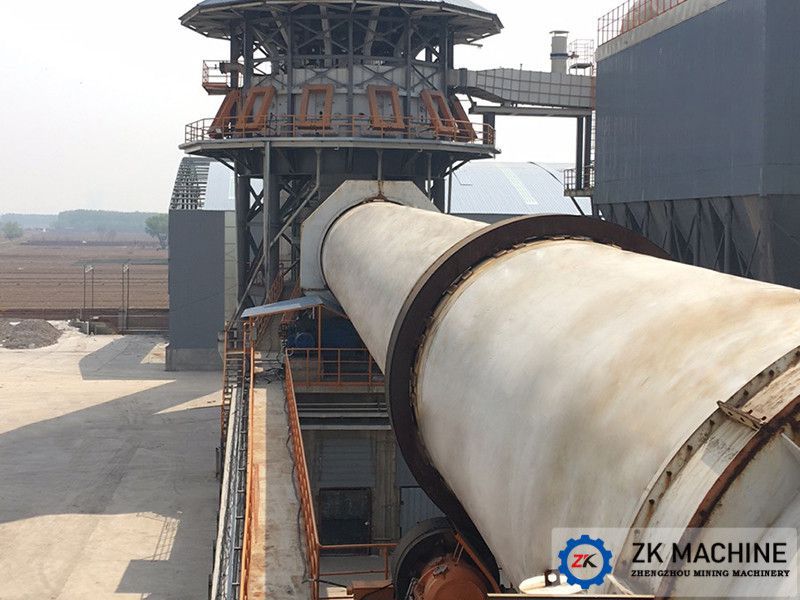Temperature in the Rotary Kiln and its Influence
Date:2020-09-30 Source:zk corp Views:
The flame temperature of the rotary kiln directly affects the calcination of clinker, and the temperature is affected by the following factors.
1. The calorific value of coal:
Coal has high calorific value and high flame combustion temperature. In order to carry out effective economic operation, it is recommended that the low calorific value of coal for rotary kiln is not less than 20900KJ/Kg.
2. Moisture of coal:
The presence of a small amount of water vapor is beneficial to the ignition of pulverized coal. It can promote the combination of carbon and oxygen and increase the radiation capacity of the flame after ignition. Therefore, the pulverized coal does not need to be absolutely dry. Keeping 1%-1.5% moisture in the pulverized coal can be Promote combustion, but excessive water vapor will lower the flame temperature, extend the flame length, and make the exhaust gas temperature higher. Some scholars pointed out: 1% more water in the fuel will reduce the flame temperature by about 10-20°C and increase the heat loss of the exhaust gas 2 %-4%.

3. Coal fineness:
The finer the pulverized coal, the faster the burning speed, the more concentrated the vitality, and the higher the combustion flame temperature.
4. The amount of combustion air:
Too much or too little air quality for combustion will lower the combustion temperature and increase heat loss. When the amount of air is too much, excess air will be formed in the kiln. If this excess air comes from the preheated secondary air of the cooler, the combustion temperature will decrease less. If the excess air comes from the air leakage, the air leakage from the kiln head will not only lower the flame temperature, but also increase the heat taken away by the clinker due to the reduction of the primary air from the cooler, and the increase in the amount of exhaust gas will increase the heat loss. It will increase the total heat consumption even more. If the air supply is insufficient during combustion, resulting in incomplete combustion and CO production, the temperature will drop even more, because the heat generated per kilogram of carbon burned into CO only accounts for about 30% of the heat that should be released during complete combustion. In order to ensure that the pulverized coal can be fully burned, it is necessary to maintain a proper amount of air. Generally, the exhaust air at the kiln tail is controlled to make the excess air volume at 5%-15%, that is, the excess air coefficient is 1.05-1.15, which is equivalent to the oxygen in the exhaust gas of the kiln tail. The content is 1%-2%. In addition, the air leakage of each part of the kiln system should be minimized.

